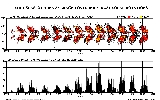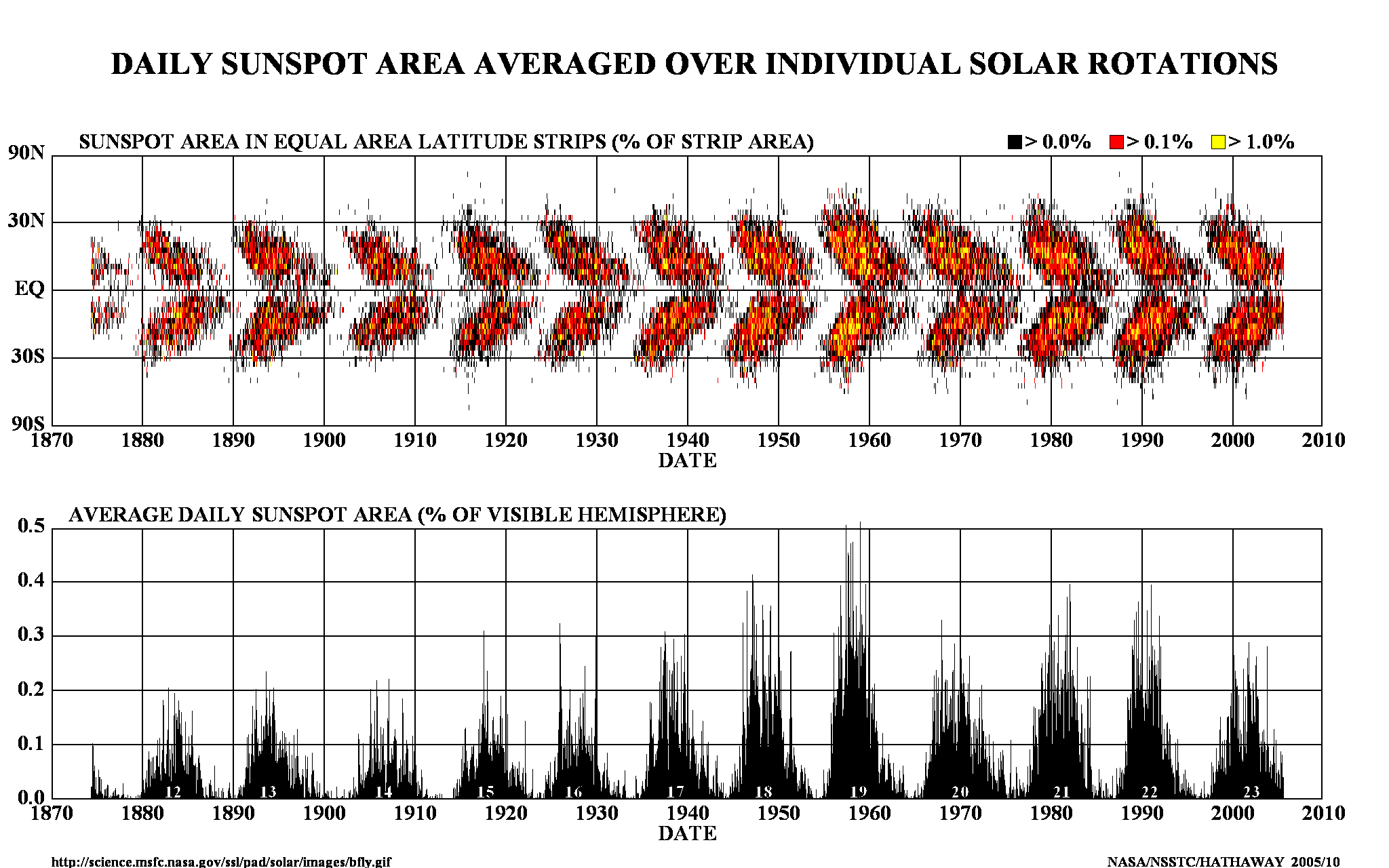
Babcock Model
Encyclopedia
The Babcock Model describes a mechanism which can explain magnetic and sunspot
patterns observed on the Sun
.
A modern understanding of sunspots starts with George Ellery Hale
, in which magnetic field
s and sunspots are linked. Hale suggested that the sunspot cycle period is 22 years, covering two polar reversals of the solar magnetic dipole field.
 Horace W. Babcock
Horace W. Babcock
proposed in 1961 a qualitative model for the dynamics of the solar outer layers:
Sunspot
Sunspots are temporary phenomena on the photosphere of the Sun that appear visibly as dark spots compared to surrounding regions. They are caused by intense magnetic activity, which inhibits convection by an effect comparable to the eddy current brake, forming areas of reduced surface temperature....
patterns observed on the Sun
Sun
The Sun is the star at the center of the Solar System. It is almost perfectly spherical and consists of hot plasma interwoven with magnetic fields...
.
A modern understanding of sunspots starts with George Ellery Hale
George Ellery Hale
George Ellery Hale was an American solar astronomer.-Biography:Hale was born in Chicago, Illinois. He was educated at MIT, at the Observatory of Harvard College, , and at Berlin . As an undergraduate at MIT, he is known for inventing the spectroheliograph, with which he made his discovery of...
, in which magnetic field
Magnetic field
A magnetic field is a mathematical description of the magnetic influence of electric currents and magnetic materials. The magnetic field at any given point is specified by both a direction and a magnitude ; as such it is a vector field.Technically, a magnetic field is a pseudo vector;...
s and sunspots are linked. Hale suggested that the sunspot cycle period is 22 years, covering two polar reversals of the solar magnetic dipole field.

Horace W. Babcock
Horace Welcome Babcock was an American astronomer. He was the son of Harold D. Babcock.He invented and built a number of astronomical instruments, and in 1953 was the first to propose the idea of adaptive optics. He specialized in spectroscopy and the study of magnetic fields of stars...
proposed in 1961 a qualitative model for the dynamics of the solar outer layers:
- The start of the 22-year cycle begins with a well-established dipole field component aligned along the solar rotational axis. The field lines tend to be held by the highly conductive solar plasma of the solar surface.
- The solar surface plasma rotation rate is different at different latitudes, and the rotation rate is 20 percent faster at the equator than at the poles (one rotation every 27 days). Consequently, the magnetic field lines are wrapped by 20 percent every 27 days.
- After many rotations, the field lines become highly twisted and bundled, increasing their intensity, and the resulting buoyancy lifts the bundle to the solar surface, forming a bipolar field that appears as two spots, being kinks in the field lines.
- The sunspots result from the strong local magnetic fields in the solar surface that exclude the light-emitting solar plasma and appear as darkened spots on the solar surface.
- The leading spot of the bipolar field has the same polarity as the solar hemisphere, and the trailing spot is of opposite polarity. The leading spot of the bipolar field tends to migrate towards the equator, while the trailing spot of opposite polarity migrates towards the solar pole of the respective hemisphere with a resultant reduction of the solar dipole moment. This process of sunspot formation and migration continues until the solar dipole field reverses (after about 11 years).
- The solar dipole field, through similar processes, reverses again at the end of the 22-year cycle.
- The magnetic field of the spot at the equator sometimes weakens, allowing an influx of coronalCoronaA corona is a type of plasma "atmosphere" of the Sun or other celestial body, extending millions of kilometers into space, most easily seen during a total solar eclipse, but also observable in a coronagraph...
plasma that increases the internal pressure and forms a magnetic bubble which may burst and produce an ejection of coronal mass, leaving a coronal hole with open field lines. Such a coronal mass ejectionCoronal mass ejectionA coronal mass ejection is a massive burst of solar wind, other light isotope plasma, and magnetic fields rising above the solar corona or being released into space....
s are a source of the high-speed solar windSolar windThe solar wind is a stream of charged particles ejected from the upper atmosphere of the Sun. It mostly consists of electrons and protons with energies usually between 1.5 and 10 keV. The stream of particles varies in temperature and speed over time...
. - The fluctuations in the bundled fields convert magnetic field energy into plasma heating, producing emission of electromagnetic radiationElectromagnetic radiationElectromagnetic radiation is a form of energy that exhibits wave-like behavior as it travels through space...
as intense ultravioletUltravioletUltraviolet light is electromagnetic radiation with a wavelength shorter than that of visible light, but longer than X-rays, in the range 10 nm to 400 nm, and energies from 3 eV to 124 eV...
(UV) and X-rayX-rayX-radiation is a form of electromagnetic radiation. X-rays have a wavelength in the range of 0.01 to 10 nanometers, corresponding to frequencies in the range 30 petahertz to 30 exahertz and energies in the range 120 eV to 120 keV. They are shorter in wavelength than UV rays and longer than gamma...
s.

